
views
Weighing Resin and Paint

Put on gloves and goggles to protect yourself from toxic fumes. Epoxy resin is fairly toxic, so it’s important to stay safe when you’re using it. Put on rubber gloves to protect your skin and wear safety goggles to protect your eyes in case of splashes. You should also try to work in a well-ventilated space to avoid a buildup of fumes.
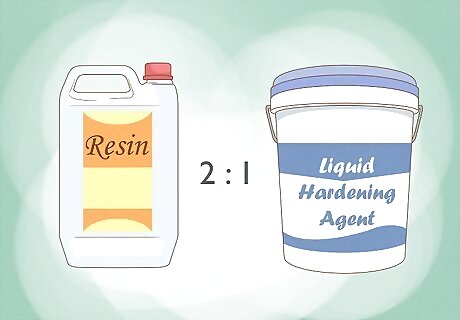
Mix your epoxy resin with the liquid hardening agent. Every resin is slightly different in its ratios, so you should check your manufacturing instructions before you start. Use a wooden stirrer to mix your agents together fully for about 1 minute. Most epoxy resins require a 2:1 ratio of resin to hardening agent. Resin that hasn’t been mixed all the way tends to clump and not look as smooth when it dries.
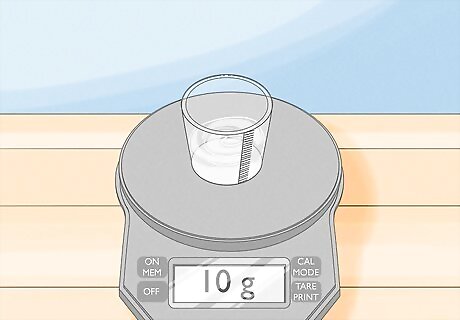
Weigh out the amount of resin you want to color with a digital scale. Grab a small digital scale and a smaller plastic cup. Measure out the resin that you’d like to color first—10 grams is a good place to start—then set your plastic cup aside. It’s always good to start with a smaller batch than you think you’ll need. You can make more resin, but you can’t save your excess for later.
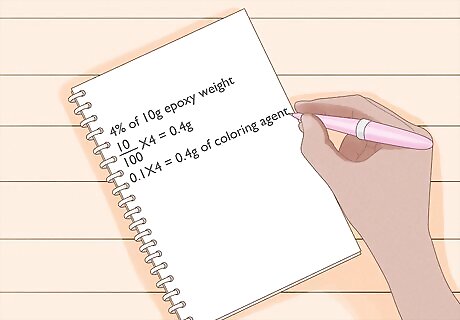
Calculate out 2% to 4% of the resin’s weight in acrylic paint. The amount of coloring agent that your epoxy can handle depends on the type and brand that you buy. Check the manufacturing instructions to see how much paint you can add, then calculate that number by dividing the weight of the epoxy by 100 and multiplying it by your percentage. For example, if you’re working with 10 g of epoxy and it can handle 4% of its weight in paint, divide 10 / 100 = 0.1, then multiply that by 4 to get 0.4 g. Most resin can handle around 4% of a coloring agent, but some can be as low as 2% or as high as 6%.
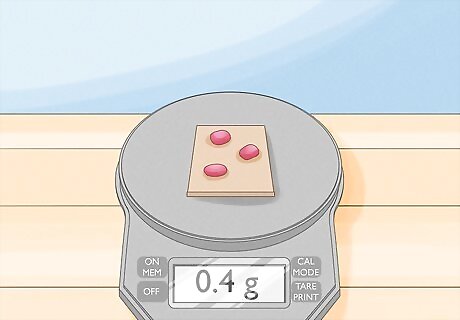
Use your scale and a small piece of cardboard to weigh the paint. Cut out a small square of cardboard and place it on your digital scale, then set the scale to 0. Drip out your paint 1 to 2 drops at a time until the scale reaches your calculated amount. Go slowly so that you don’t accidentally pour too much out. If you do go over by just a little bit, scrape some of the paint off and wipe it onto a paper towel.
Mixing
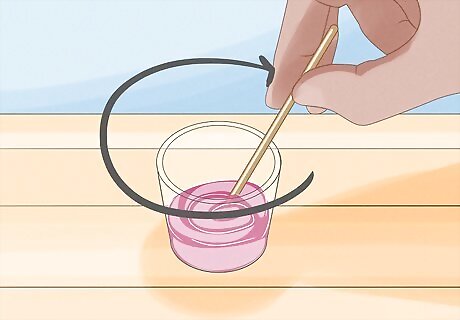
Color a small sample before doing a large batch of resin. Acrylic paint can look very different when it mixes with resin. To avoid wasting an entire batch, measure out a little bit first and test your paint color. Then, you can decide if you want to tweak it or mix up a larger batch. You should also do a tester pot if you’re working with a new brand of acrylic paint. Paint can vary in shades from company to company, so it’s always good to double check.
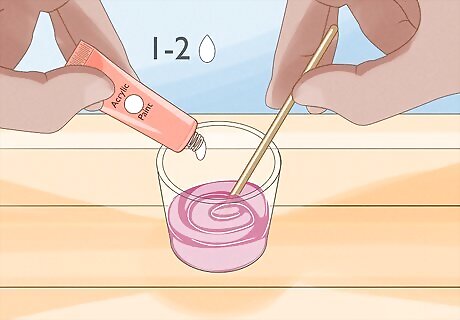
Lighten the color by adding white acrylic paint. If your resin comes out too dark, you can mix your paint with white paint to make it lighter. Start with a fresh batch of resin and make sure you stick to the total weight that your resin can handle in paint. You can try a 1:1 ratio of colored paint and white paint, or try out different ratios for new and more interesting shades. For example, if your 10 g of resin can handle 4% coloring agent (or 0.4 g), you could mix in 0.2 g of color and 0.2 g of white paint.
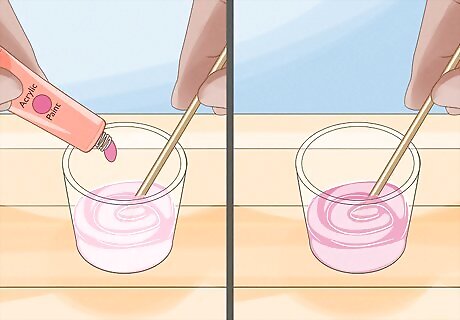
Darken the color by adding more acrylic paint. If your resin didn’t come out as pigmented or as dark as you wanted it, try adding slightly more paint to your resin. Make sure you stay within the percentage of coloring agent that your resin can handle, though, to avoid overloading your mixture. For example, if your resin can handle 0.4 g of paint and you only added 0.2, try upping it to 0.3 or 0.4 g instead.
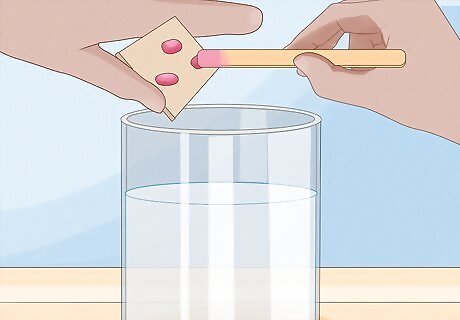
Pour the acrylic paint into your resin mixture. Pick up your piece of cardboard and carefully hold it over your plastic cup, then scoop the paint mixture into the epoxy. Try to get all of the paint off the cardboard and into the cup so that your color turns out dark and even. Epoxy only stays pliable for about 30 minutes after you mix it together, so you need to work fast.
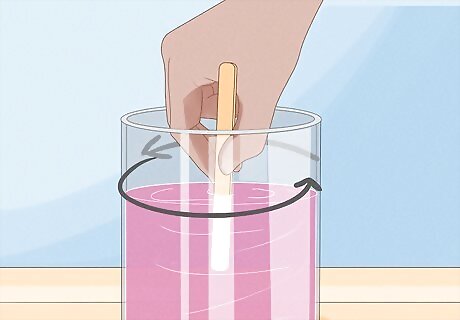
Stir the mixture together with a wooden skewer for about 1 minute. The more you mix the paint in, the smoother it will look. Use your stick to stir your paint into the epoxy for about 1 minute, and keep an eye on the color change that happens as you stir (in case it’s not quite what you’re going for). Acrylic paint can darken, lighten, or change shades when it mixes with epoxy.
Drying

Cast your resin into a mold. Once your resin has changed colors, you can pour it into a mold just like you would with clear resin. Make sure the top looks smooth so that your mold dries shiny and clear. You can also mix different resin colors together to try a marbling effect.

Let the resin sit for 12 to 24 hours so it can dry completely. When the resin is dry, you’ll be able to see the true color of your paint mixture. Acrylic paints tend to lose a bit of the glossiness that comes with resin dye or pigments, so if you notice that your resin isn’t as shiny as it usually is, it’s probably because of the paint. If your resin didn’t set right, you may have added too much paint.

Pop the resin out of the mold to inspect your work. Turn your mold upside down and press on the back of the mold to get the resin out. If your resin has set well, it should come out of the mold just fine, and look smooth and shiny. If your resin crumbles or still looks wet, you may need to revisit your ratios. You can compare and contrast how the resin shades look next to each other once they’re out of their molds.

















Comments
0 comment